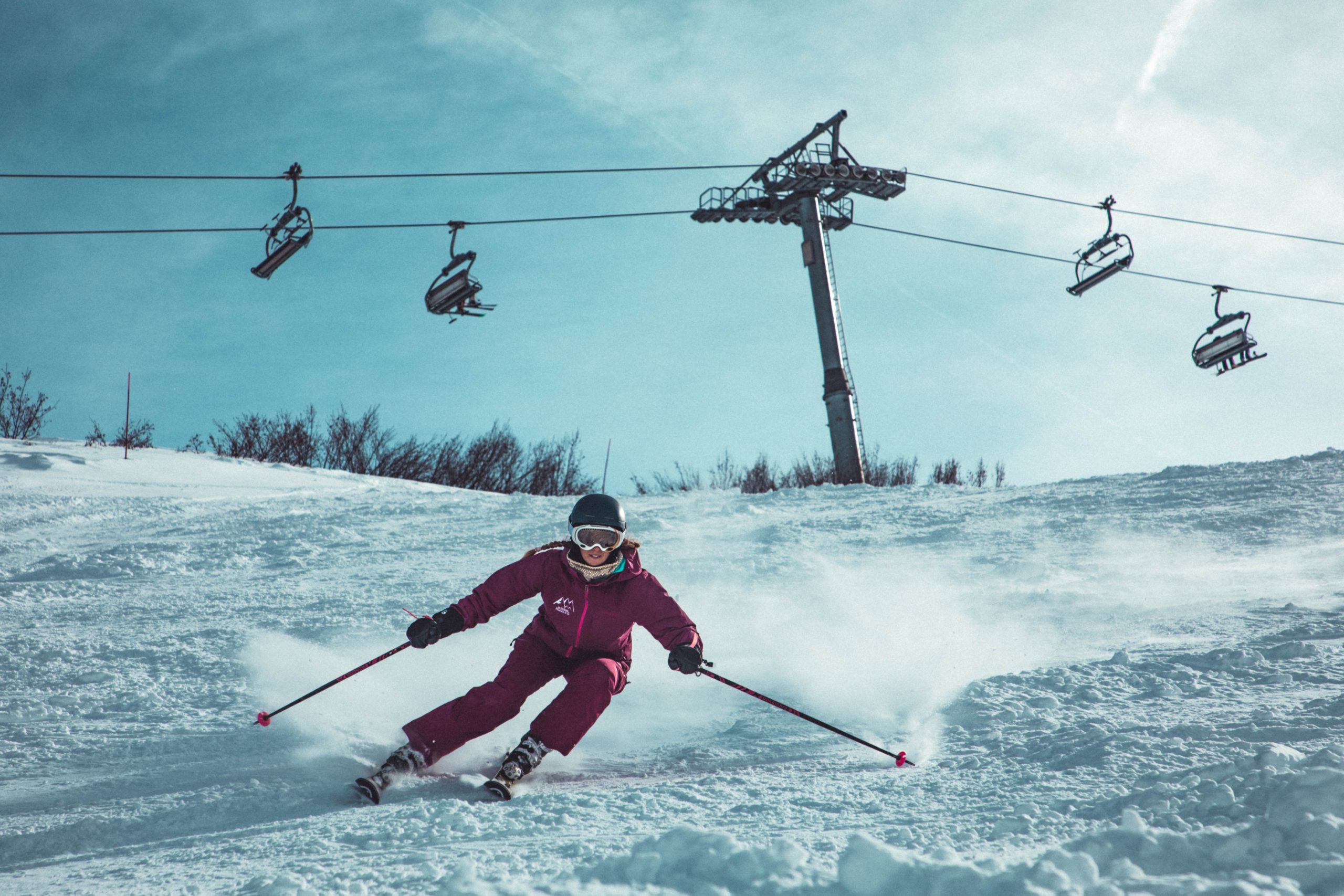
Got a knee problem? A lot of us do! Knee pain is one of the most common presenting symptoms in doctor and physiotherapist clinics across the country. In fact, a Global News story last year called it “a quiet epidemic”.
With the fresh snow these past few weeks, and the attractiveness of an outdoor, mostly-socially-distant activity such as skiing, many of us are thinking of hitting the slopes soon. But there’s no activity that brings out the troublesome knee issues quite as much as skiing. Whether it be osteoarthritis, stability issues, or kneecap problems you deal with, here are a few tips to keep you carving the slopes this winter
Get ready
The time to preparing your knees for skiing is now – not 10 minutes before your first run. If you are not in the habit of exercising your knees regularly already, give yourself at least a couple of weeks to get your knee limbered up and to build some strength and stability. Regularly performing some of the exercises noted below will help to get things going. Also, if you need a brace, now is the time to get on it. Custom braces take about 1-2 weeks to be made so
Keep it flexible and strong
Exercise can help almost any knee condition. For example, almost all knee issues can benefit from moderate cycling, whether it be stationary or road cycling. Cycling lubricates the joint, increases circulation for tissue repair, increases flexibility and provides some light strengthening. Some other common exercises that are likely to benefit most knee issues include (link to videos) quadricep stretching, quadricep strengthening, hip strengthening, and core strengthening. These are just a sample of exercises. There may be others for your particular condition, and the best way to get a proper ski season preparation program is to consult with your registered physiotherapist who can take into account your history and current condition.
If needed, brace it up
Some knees just need a little help to give you an enjoyable day on the slopes. There is a common misconception that knee braces can make your knee weaker. This is not true. It is pain, inflammation, and disuse that result in most knee weakening and, appropriately used, knee braces can actually help in the strengthening process and prevent further injury. There are literally hundreds of knee braces out there and after 25 years in physiotherapy and knee bracing, I think I’ve seen most of them. They basically can be categorized into four types. Here are a few of my favorites in each group.
Knee Stability Braces

These are for knee ligament injuries. The most common ligament injuries in the knee are to the “ACL” and “MCL” ligaments. A great ACL brace is the DJO A22 which does a fantastic job at protecting the knee – either before or after surgery. The A22 gets great reviews from our clients and can be custom made for your knee at our clinic. It is covered by most insurance plans. Significant MCL injuries can benefit from the Bauefeind Genutrain S, or the DJO Playmaker II.
Knee Osteoarthritis Unload Braces
If your injuries were a while ago, or you just have pain gradually building up in your knee you may have some wear and tear inside the knee joint. We call this Knee Osteoarthritis. There are a number of braces made specifically for Knee OA. Conceptually, we try to “unload” the affected part of the knee. See the video below for a detailed explanation from Breg Bracing. For moderate to severe situations, the Bauerfeind Genutrain OA, DJO Defiance, or the Breg Z12 OA should be considered. Again, these braces are covered by most insurance plans.
Patellofemoral Braces
The kneecap (patella) can be a source of pain and restriction for many people. Your kneecap function depends largely on genetics, flexibility and strength. A great brace for getting the kneecap to move well ‘within its groove’ and reduce pain is the Bauerfeind Genutrain. If you need more significant control, the Bauerfeind P3 or the DJO Lateral J, or the DJO Tru-Pull Advanced are other control options.
General Knee Support

If you don’t have one of these more significant diagnoses, but you have pain and need some general support, probably the most successful brace we have used for this in our 25 years is the Bauerfeind Genutrain. It has a compressive knit, light stability stays, knee tracking built into the same brace. Many patients find it is all they need for support while being lightweight, comfortable, and flexible. Insurance will sometimes cover this brace, but you need to inquire of your own plan.
Hit the slopes!
With your exercises, preparation, and bracing you are ready to go. Feel free to email me at jeremy@fusionphysiochilliwack.com if you have any questions, or call FusionPhysio at 604-792-8648 to book a Physiotherapy Knee Assessment, or Custom Knee Brace Consultation / Fitting if you need any further help in getting you back on the slopes this winter!
Jeremy McAllister, BScPT, MHA
Comments are closed.